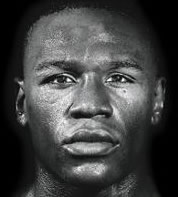 Mayweather vs. Mosley – A Throwback to the Rich History of American Fights and the Welterweight Division
Mayweather vs. Mosley – A Throwback to the Rich History of American Fights and the Welterweight Division
LOS ANGELES (April 21)…Check your almanac: On the night of September 16, 1981, time stopped for one hour while welterweight champions Sugar Ray Leonard and Thomas Hearns traded punches in Las Vegas. That’s how big a fight it was. On May 1, welterweights Floyd “Money” Mayweather and Sugar Shane Mosley will clash in the biggest bout of 2010. The mega-matchup of multi-division champions, pound-for-pound kings and future Hall of Famers summons memories not only of Leonard-Hearns, but also of the rich history of American welterweights.
In recent years, boxing’s headlines have been made largely by foreign-born fighters like Vitali and Wladimir Klitschko, Ricky Hatton, Manny Pacquiao, Joe Calzaghe and Juan Manuel Marquez. At welterweight or otherwise, there have been precious-few all-American matchups. In that sense, Mayweather-Mosley is a throwback fight.
In the boxing-rich 1980s, the majority of super-fights were contested between Americans. Among the memorable matchups were Leonard-Hearns, Leonard-Marvin Hagler, Hagler-Hearns, Larry Holmes-Gerry Cooney, Holmes-Muhammad Ali, Michael Spinks-Holmes and Mike Tyson-Spinks.
The same can be said for many of the major fights of the 1990s, including Evander Holyfield-Riddick Bowe, Holyfield-Tyson, Holyfield-George Foreman, Michael Moorer-George Foreman Roy Jones-Bernard Hopkins, Jones-James Toney and Pernell Whitaker-Oscar De La Hoya.
The first decade of the new century has seen a shift. There have been big fights involving Americans (De La Hoya-Mayweather, De La Hoya- Hopkins, Mosley-De La Hoya I and II), but nowhere near as many as in previous years. Perhaps Mayweather-Mosley represents the beginning of a shift back to the way it used to be.
No one is quite sure of the origin of the word “welterweight,” but boxing historians are certain that the 147-pound division’s first world champion was Boston’s Paddy Duffy, who was crowned in 1888. In the 122 years since, the division has been dominated by Americans.
Consider the following:
*In 1939, St. Louis’ Henry Armstrong, who is usually ranked below only Sugar Ray Robinson on all-time pound-for-pound lists, defended his welterweight title an incredible 11 times. This feat took place only a year after Armstrong defeated Chicago’s Barney Ross, an all-time great himself, to win the title.
*New York City’s Sugar Ray Robinson is remembered primarily as a middleweight, but was at his fighting best as a welterweight. He defended his title five times and was beaten only once, by a middleweight…Jake LaMotta.
*A handful of the fighters who have held the mythical pound-for-pound title did so as welterweights, including Whitaker (Norfolk, Virginia), Leonard (Palmer Park, Maryland), Mayweather (Grand Rapids, Michigan), Mosley (Pomona, California), De La Hoya (Los Angeles) and Donald Curry (Fort Worth, Texas).
*Other legends who held the welterweight title before jumping to middleweight include Mickey Walker (Elizabeth, New Jersey) and Carmen Basilio (Canastota, New York).
*Four of Ring Magazine’s 10 best welterweight fights of all time were all-American affairs: Basilio-Tony DeMarco II, Leonard-Hearns I, Simon Brown-Maurice Blocker and De La Hoya-Mosley I.
American athletes have historically been bigger than their foreign counterparts. Scan boxing’s various divisions and you’ll see that while the vast majority of heavyweight champions have been American, the United States has produced very few notable flyweights and bantamweights.
With a limit of 147 pounds, the welterweight division lies somewhere near the middle of boxing’s eight original weight classes. One might say it is the average or median of all weight classes and as a result, there have been great fighters from all over the world competing in the division. Pacquiao hails from the Philippines; Miguel Cotto, Felix Trinidad, and Wilfred Benitez from Puerto Rico; Ike Quartey from Ghana; Ted “Kid” Lewis from England; Joe Walcott from Barbados; Jimmy McLarnin from Ireland; Pipino Cuevas from Mexico; Roberto Duran from Panama and Jose Napoles and Kid Gavilan from Cuba.
Still, Ring Magazine lists Americans as the four best fighters in the history of the division (Armstrong, Robinson, Leonard, and Ross). Until the recent influx of titlists from the former Soviet Union and elsewhere, Americans dominated at heavyweight, and their excellence was best explained by genetics. Not so at welterweight, where the fighters have always battled on an even playing field.
Mayweather-Mosley serves as a reminder not only that Americans remain among the world’s best fighters, but also that the welterweight division is still red, white and blue.


